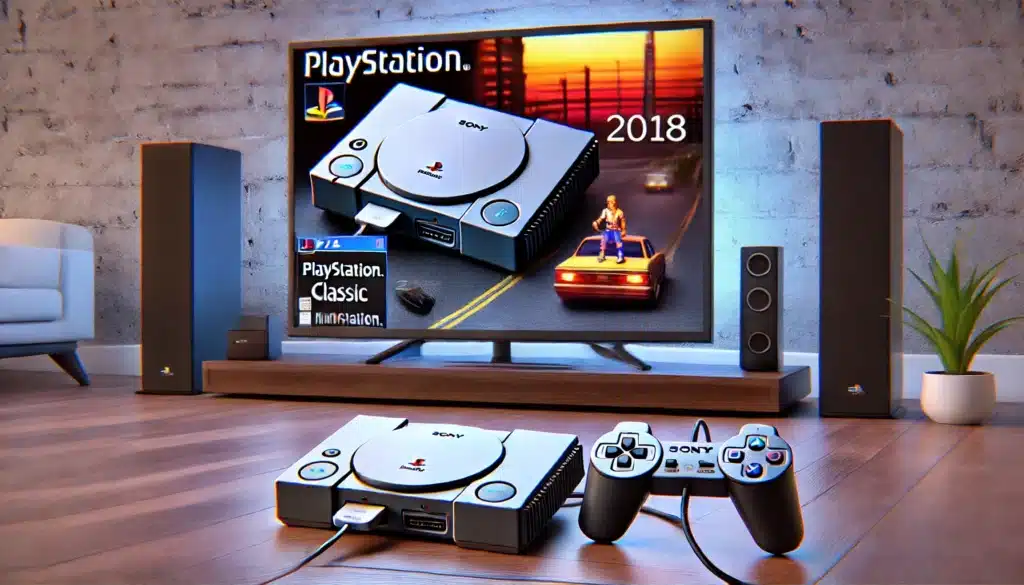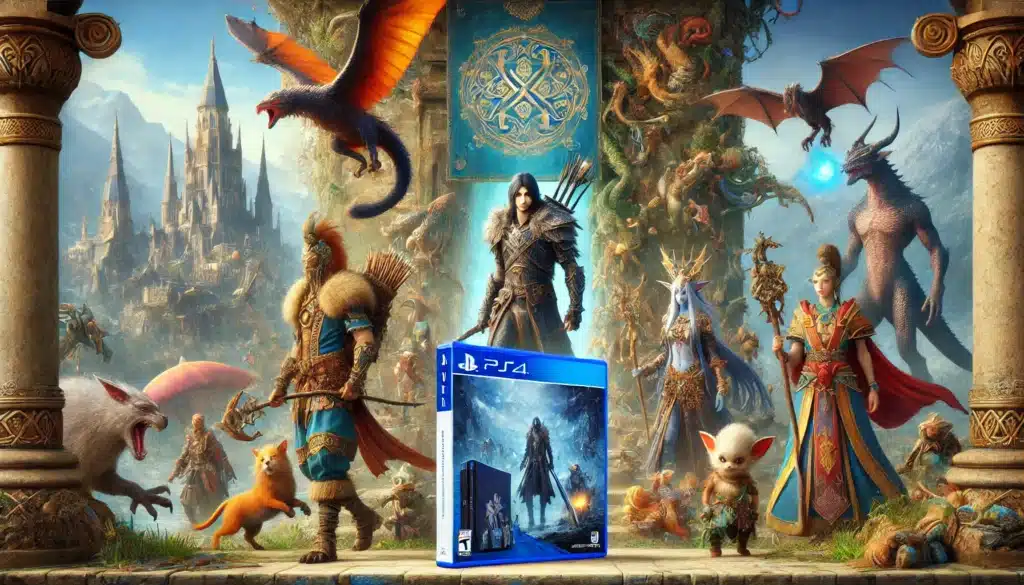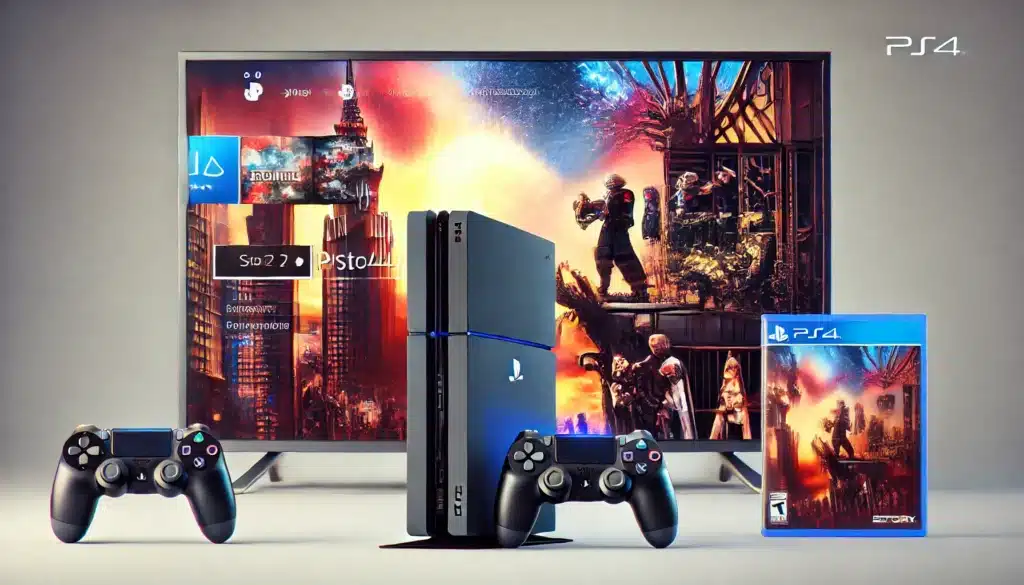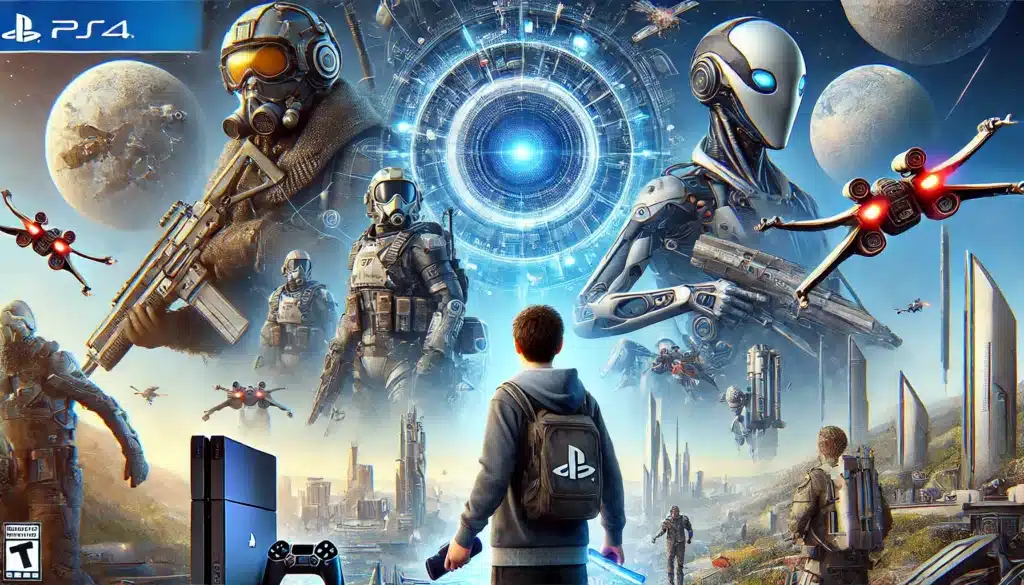Since its inception, the PlayStation brand has revolutionized the gaming industry. From humble beginnings in the 1990s, it has become a leading name in home entertainment. PlayStation’s journey is a testament to innovation, persistence, and an unyielding commitment to gaming excellence. This article explores the evolution of PlayStation, highlighting key milestones and innovations that have defined its legacy.

The Birth of PlayStation
Origins and Development The story of PlayStation begins with a failed collaboration between Sony and Nintendo. In the early 1990s, Sony was initially set to develop a CD-ROM add-on for Nintendo’s SNES console. However, the partnership dissolved, prompting Sony to develop its own gaming console. Under the leadership of Ken Kutaragi, often referred to as the “Father of PlayStation,” Sony embarked on creating the PlayStation console.

PlayStation (PS1) – 1994 Released in December 1994 in Japan and September 1995 in North America, the original PlayStation (PS1) marked Sony’s official entry into the gaming console market. The PS1 was revolutionary, boasting 3D graphics capabilities that outclassed many of its competitors. Notable games like “Final Fantasy VII,” “Metal Gear Solid,” and “Gran Turismo” showcased the console’s potential and helped establish PlayStation as a formidable brand in the gaming industry. By the end of its lifecycle, the PS1 had sold over 100 million units worldwide, making it one of the best-selling consoles of its time.

PlayStation 2 (PS2) – 2000
Dominance and Innovation Building on the success of the PS1, Sony released the PlayStation 2 (PS2) in March 2000. The PS2 featured backward compatibility with PS1 games, a significant selling point that attracted a broad audience. The console’s hardware was a leap forward. It offered improved graphics, a built-in DVD player, and an extensive library of games. Titles such as “Grand Theft Auto: San Andreas,” “Shadow of the Colossus,” and “God of War” became iconic. The PS2’s success was unprecedented, with over 155 million units sold. It solidified its position as the best-selling console of all time.

PlayStation Portable (PSP) – 2004
Entering the Handheld Market Sony ventured into the handheld gaming market with the PlayStation Portable (PSP) in December 2004. The PSP was a powerful device for its time, capable of playing high-quality 3D games, music, videos, and more. Despite facing stiff competition from Nintendo’s DS, the PSP carved out a niche market and sold over 80 million units. It was praised for games like “Monster Hunter Freedom Unite,” “Crisis Core: Final Fantasy VII,” and “Patapon.”

PlayStation 3 (PS3) – 2006
Challenges and Triumphs The PlayStation 3 (PS3), launched in November 2006, introduced high-definition gaming and multimedia capabilities. It included a Blu-ray player. Despite its advanced technology, the PS3 faced a rocky start due to its high launch price and complex architecture. Initially, this made game development challenging. However, it eventually found its footing with acclaimed titles such as “The Last of Us,” “Uncharted 2: Among Thieves,” and “Metal Gear Solid 4: Guns of the Patriots.” By the end of its lifecycle, the PS3 had sold over 87 million units.

PlayStation Vita – 2011
Advanced Handheld Gaming The PlayStation Vita, released in December 2011, was Sony’s follow-up to the PSP. The Vita featured dual analog sticks, a touchscreen, and impressive graphical capabilities. Despite positive reviews and a strong launch lineup, including “Uncharted: Golden Abyss” and “Persona 4 Golden,” the Vita struggled to gain traction in a market increasingly dominated by mobile gaming. Ultimately, it sold around 16 million units.

PlayStation 4 (PS4) – 2013
A Return to Form The PlayStation 4 (PS4), launched in November 2013, marked a significant turnaround for Sony. With a more developer-friendly architecture, Sony focused on gamer-centric features. The PS4 quickly became a commercial success. Exclusive titles like “Bloodborne,” “Horizon Zero Dawn,” and “Spider-Man” received critical acclaim. These helped the console sell over 116 million units by the end of its lifecycle. The PS4 also embraced online gaming and digital distribution, further solidifying its place in the modern gaming landscape.

PlayStation 5 (PS5) – 2020
Next-Generation Gaming Released in November 2020, the PlayStation 5 (PS5) represents the latest evolution in Sony’s console lineup. The PS5 boasts significant improvements in performance, including a custom SSD for faster load times, ray tracing capabilities, and a new DualSense controller. This controller offers haptic feedback and adaptive triggers. Despite launch challenges due to high demand and supply chain issues, the PS5 has been well-received. Standout games like “Demon’s Souls,” “Ratchet & Clank: Rift Apart,” and “Returnal” have contributed to its success.

Innovation Beyond Consoles
Virtual Reality Sony has also ventured into virtual reality with the PlayStation VR (PSVR), launched in October 2016. The PSVR brought immersive gaming experiences to the PlayStation 4, with popular titles like “Astro Bot Rescue Mission” and “Beat Saber.” Sony continues to invest in VR technology, with the PSVR2 announced for the PlayStation 5. It promises even more advanced features and capabilities.

Streaming and Subscription Services Adapting to changing consumer preferences, Sony introduced PlayStation Now, a cloud gaming service. This service allows users to stream a wide variety of PlayStation games. Additionally, the PlayStation Plus subscription service offers monthly free games, online multiplayer access, and exclusive discounts. These enhance the overall PlayStation ecosystem.

Community and Cultural Impact
E-Sports and Competitive Gaming PlayStation has played a significant role in the rise of e-sports and competitive gaming. Titles like “Call of Duty,” “FIFA,” and “Street Fighter” have established robust competitive scenes. PlayStation consoles often serve as the platform of choice for major tournaments and events.
Cultural Influence The influence of PlayStation extends beyond gaming into broader popular culture. Characters like Kratos from “God of War,” Nathan Drake from “Uncharted,” and Aloy from “Horizon Zero Dawn” have become iconic figures. PlayStation’s impact is evident in movies, merchandise, and even literature. This reflects its integral role in contemporary entertainment.

Future Prospects
Continued Innovation Looking ahead, Sony is expected to continue pushing the boundaries of gaming technology. With advancements in artificial intelligence, augmented reality, and enhanced connectivity, the future of PlayStation promises to be exciting and transformative.
Expanding Accessibility Sony is also likely to focus on making gaming more accessible to a broader audience. This includes expanding its cloud gaming services and developing more inclusive games. Additionally, Sony is leveraging new technologies to reach gamers around the world.

Conclusion
The evolution of PlayStation is a remarkable journey of innovation, adaptation, and success. From the original PS1 to the cutting-edge PS5, Sony has consistently set new standards in the gaming industry. As PlayStation continues to evolve, it remains at the forefront of gaming technology. It is shaping the future of entertainment for millions of fans worldwide.
For more detailed insights and updates on PlayStation and other gaming trends, visit What’s Hot in UAE.


